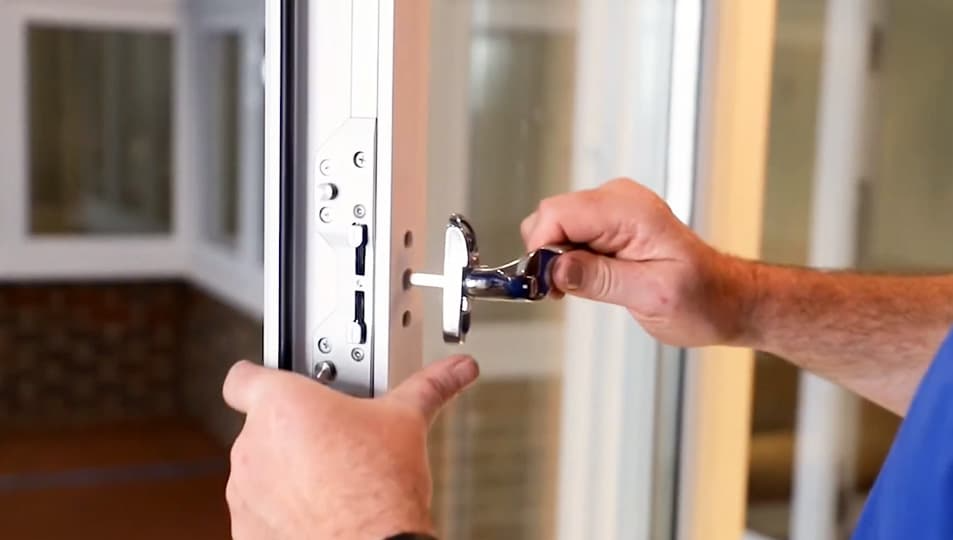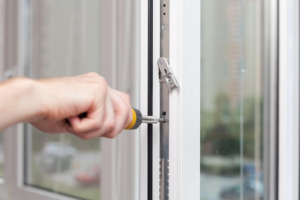 Double Glazing Door Locks
Double Glazing Door Locks
Many homeowners choose double glazed doors and windows to increase insulation as well as energy efficiency and noise reduction. They are also a powerful deterrent to burglars.
To increase the security of your double-glazed windows, ensure that they have been fitted with anti-jemmy hinges. These specialised hardware components make it difficult to open window sashes.
Multi-point locking
Multipoint door locks are one of the most reliable security devices you can put in in your home or workplace. They are nearly impossible to pick or break, and they can be an excellent option to add to any security system. They can also increase the efficiency of your energy by reducing drafts and enhancing the seal around the door frame.
Multi-point locking systems consist of a deadbolt and a live bolt, and hook bolts located above and beneath the latch. They also include flush bolts that lock into the door’s head and the sill. They typically extend the most, if not all across the entire length of the door. In commercial situations, they are called “full-width” systems due to the fact that they secure the entire door opening.
Multi-point locking is offered on the majority of uPVC and certain timber doors. This type of lock offers a higher level of security compared to standard locks. It is typically specified as part of the Secured by Design initiative, that has been approved by the police.
When a multi-point lock made of uPVC door is closed the handle on the outside activates the latch bolt. The inside handle can be locked by turning the thumbturn on the inside while the door handle is raised, or using a lock key. You should always use keys to lock your door once it is closed, since trying to force the deadbolt or latch bolt using a handle can damage the lock as well as the hinges.
If your uPVC multi-point lock isn’t working properly it could be due to it’s not aligned with the door frame. You can test this by placing a spirit level on the top of the door and observing any gaps in the miter joints, where the frame is joined to the door.
It is worth consulting your double glazing specialist to determine if there’s a gap and to fix it. They can replace window lock the lock or install a replacement. They’ll know if the problem is caused by damage to the frame or the lock unit itself. In these cases, the technician will be able to repair or replace the multipoint lock in order to make it work again.
Espagnolette locks
Espagnolette locks are among the most commonly used window locking mechanisms for modern uPVC double glazed window lock repairs near me glazed windows. The shape of the flat strip that rotates when you turn the handle is a good way to identify them. They are used with multi-point locks around the frame of your window lock repair near me to lock and unlock it safely. If you’re looking to improve your uPVC window, espagnolette handles can be used for new builds or for renovations. They are available in a range of styles, both contemporary and period, and are available in a variety of bar lengths, backset options and the heights of the mushroom cams, with a variety of profile keepers to fit most applications.
Although they are a very well-liked option however, espagnolette locks have also been criticized as providing low levels of security to French doors. A single locking point in the middle of the door is easily bypassed. In addition, it is relatively easy for thieves to gain access to your French doors by pushing the handle to either the left or right. These doors are often the main entrances to your home, and they should be secured to limit the chance of unauthorized intrusion.
The espagnolette lock does not function as a bolt, but it is a single-piece mechanism that can be attached externally to the edge of French doors or internally to a casement frame. The mechanism operates with an handle. It consists of a rod which has hooks at its head and sill. These hooks fit into sockets on the window frame. When the window’s handle is turned on it moves the rod upwards and downwards. The hooks are then locked into their receivers.
They are a great option for those who wish to enhance the security of French doors without compromising the aesthetics of the door. These types of handles can be used with a variety of different designs and are able to be master-keyed for extra peace of mind.
Similar to cockspur handles espagnolette handles are available in both inline and cranked models to match the orientation of your window. Inline versions simply turn in the same manner as the original, whereas the cranked versions are available in both right and left handed designs.
Laminated glass
Laminated glass is often used in windows because it is extremely hard to break. It is also safer than normal glass because it fuses together into one single piece of safety glass, rather than shattering into loose sharp shards. This makes it perfect for homes as well as commercial properties.
Lamination is a process that involves the joining of two pieces of flat glass with a plastic interlayer in between. The entire piece is heated before being pressed to make it strong enough to be used as a door or window. The resulting laminated glass is up to 5 times stronger and 100 times more rigid than glass that is tempered. It is also able to be able to withstand more severe impacts and withstand weathering.
This type of glass is perfect for buildings that have to perform well, like enhanced safety (impact-resistant glass) and UV protection or noise reduction. Laminated glass can be paired with a high-performance coating in order to improve thermal insulation as well as solar control. It comes in a range of options to fit your budget and project.
Laminated glass is safer to use than tempered glass since it is able to be cut even after the production. It is also less likely to shatter if cut from the side rather than the edge of the glass. This makes it a good choice for glass that doesn’t open or close, such as cellar windows.
It can also be used to reduce the noise that travels through high-rise structures. The Saflex PVB interlayer of the laminated glass helps to suffocate some of the sun’s harmful UV rays, preventing discolouration of fabrics and furnishings.
Although laminated glass is typically more expensive than glass that has been tempered, it comes with many advantages that can save you money over the long term. It’s also more durable, resistant to abrasion and scratches and can be customized according to your specific requirements. It’s also less susceptible to heat damage, which makes it a good option for coastal areas and high-rise structures. Some building codes even require that exterior doors and some interior windows are made from laminated glass.
Friction hinges
Friction hinges support and hold in place doors, flaps and panels. They can also resist the movement of other hinges, and also prevent an unintentional opening and closing. They are available in various shapes and sizes. They also be fitted with different torque levels which are the forces that determine how long hinges remain open or closed.
 Aluminum is a great material for friction hinges because of its high strength-to-weight ratio, durability, and corrosion resistance. It is also light and easy to handle. It’s also available in different finishes, and is easy to set up and fix. Brass is a different material that is widely used for friction hinges. Brass is an alloy comprised of copper and zinc. It is naturally resistance to corrosion. It is more durable and stronger durable than stainless steel, but is more expensive.
Aluminum is a great material for friction hinges because of its high strength-to-weight ratio, durability, and corrosion resistance. It is also light and easy to handle. It’s also available in different finishes, and is easy to set up and fix. Brass is a different material that is widely used for friction hinges. Brass is an alloy comprised of copper and zinc. It is naturally resistance to corrosion. It is more durable and stronger durable than stainless steel, but is more expensive.
The hinges that use friction in uPVC door systems that have double glazing window lock repair glazing are able to be customized depending on the purpose for which they are intended. These modifications may include the amount of damping, the viscosity of the lubricant and the degree of tolerance between components. They could also include the environment that the hinge is used. These factors can impact the dynamic torque of hinges. It is essential to be aware of the metric when in critical applications.
There are different types of friction hinges, including one-way and detent. One-way friction hinges are characterized by constant torque in one direction, while detent friction hinges don’t have any torque in the opposite direction. Other variations include discs, pipe, and curl friction. Each type of friction hinge is unique and has its own set of properties that make it more or less useful for certain applications.
Friction hinges are also referred as ‘free-stop’ hinges because they allow the lid or door to remain at an angle after the force has been removed. This protects against injuries by preventing accidental closing. This type hinge is ideal for medical, rugged or hazardous environments. The hinges can be set to allow different levels of free play and are able to function in a variety of angles.
